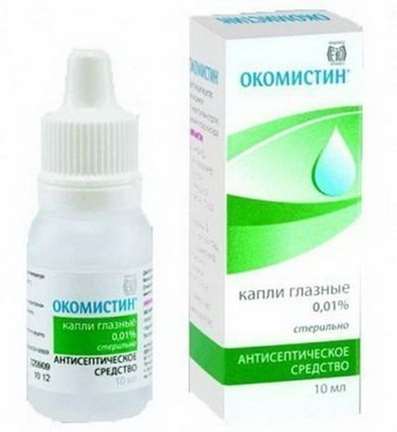Instruction for use: Pramiracetam
I want this, give me price
Trade name of the drug – Pramiracetam
International nonproprietary name: Pramiracetam
The name of the active substance in Latin: Pramiracetamum
Dosage Form: pills
Composition:
Pramiracetam 600 mg
Other ingredients: microcrystalline cellulose, colloidal anhydrous silica, crospovidone, calcium stearate, hydroxypropyl cellulose, titanium dioxide, hydroxypropylmethylcellulose, polyethylene glycol 3350, polyethylene glycol 400.
Description: Liquid dark brown. It allowed during storage precipitation.
Pharmacotherapeutic group:Other psychostimulant and nootropics
ATX Code N06B X16
Pharmacological Properties
Pharmacodynamics.
Pramiracetam - nootropic drug that improves memory and learning ability. The mechanism of action of the drug is not fully defined. By acting on the cholinergic receptors, and the metabolism of choline pramiracetam stimulates neuron activity. Pramiracetam has no inhibitory action on the central nervous system and has no influence on the autonomic nervous system. Pramiracetam also have antidepressant effects. During clinical trials in patients with senile dementia of mild to moderate severity pramiracetam increased concentration, improved learning ability, memory, orientation, and other mental activity.
Pharmacokinetics.
Pharmacokinetic studies in humans have shown that the drug is rapidly and almost completely absorbed in the digestive tract. Cmax is achieved in 2-3 hours in the blood plasma. T½ is 4-6 hours. The pharmacokinetic parameters in patients older and younger alike. However, together with a reduction in creatinine clearance decreased clearance pramiracetam. Pramiracetam does not bind to plasma proteins and excreted in the urine almost unchanged condition.
Indications
decreased ability to concentrate and memory impairment degenerative or vascular origin, particularly in the elderly.
Contraindications
Hypersensitivity to the active substance or other components of the drug, bleeding in the brain, severe kidney failure, liver failure.
Dosing and Administration
The recommended dose Pramiracetam is 600 mg every 12 hours. The total daily dose should not exceed 1200 mg. Clinically significant effect can be expected no earlier than 4-8 weeks of treatment.
Patients of advanced age. No dose adjustment is required.
Patients with renal insufficiency. In renal insufficiency, there is a delay excretion Pramiracetam. The clinical significance of slow excretion Pramiracetam not defined in renal failure. Therefore, to use the drug in patients with renal insufficiency with caution, and with the appearance of undesirable effects cancel it, as this may be signs of accumulation of the active substance in the body. Application Pramiracetam with severe renal impairment is contraindicated.
Side effect
From the digestive system: dry mouth, urinary stools, dyspepsia, nausea, pain in the upper stomach;
the part of metabolism and nutrition: loss of appetite;
on the part of the musculoskeletal system and connective tissue disorders: painful muscle spasms;
on the part of the nervous system: dizziness, tremor;
on the part of the psyche: dysphoria, confusion, insomnia, psychomotor agitation;
on the part of the kidney and urinary system: urinary incontinence.
SPECIAL INSTRUCTIONS:
in patients with renal insufficiency, there is a delay excretion Pramiracetam. Therefore, to use the drug in patients with renal insufficiency with caution. When side effects it is necessary to cancel it, as these reactions may be signs of accumulation of the active substance in the body.Piracetam (one as a compound with pharmacological class Pramiracetam) affects platelet function and aggregation, as well as other indicators of hemostasis. Therefore Pramiracetam should be used with caution in conjunction with anticoagulants or platelet aggregation inhibitors, as well as in patients with bleeding disorders.Use during pregnancy and lactation. Pramiracetam Application during pregnancy and breast-feeding is contraindicated.
Children. Research in children has not conducted, and the drug use is not recommended for children.Ability to influence the reaction rate when driving or operating other machines. Studies ability to affect the rate of reaction when driving or operating other mechanisms is not performed. However, among the side effects listed Pramiracetam dizziness, agitation, tremors and confusion. Therefore, patients should be warned about the possible impact on the ability to drive vehicles and work with other mechanisms.
Interaction with other drugs
interaction with cardiac glycosides, xanthines, anticoagulants and ACE inhibitors have been identified in patients treated with 600 mg every 12 hours Pramiracetam.
When assigning patients pharmacologically active substances of one group Pramiracetam (eg piracetam) simultaneously with thyroid extract (T3 + T4) reported confusion, irritability and sleep disorders. According to the published single-blind study in patients with severe recurrent venous thrombosis, the use of piracetam (9.6 g / day) did not result in a change acenocumarole dose to achieve the desired values of international normalized ratio - 2.5-3.5. But compared with the effect of adding only acenocumarole piracetam (9.6 g / day) significantly reduced the platelet aggregation, the release of beta-thromboglobulin, levels of fibrinogen and von Willebrand factor (VIII: C, VIII: vW: Ag, VIII: vW: Rco), as well as blood and blood plasma viscosity.
Shelf life
3 years. Do not use the drug after the expiry date.
storage conditions
Store protected from light, out of reach of children place at 12-15 ° C.
Conditions of supply of pharmacies
Be prescription

 Cart
Cart





